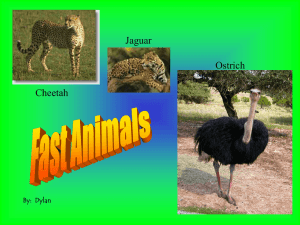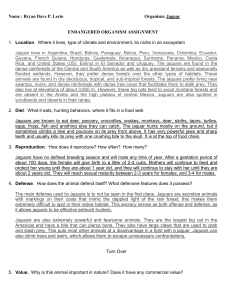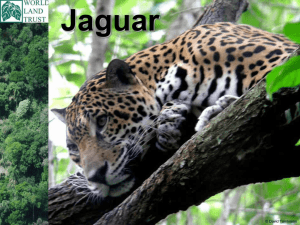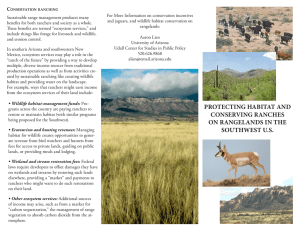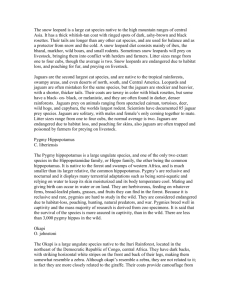Jaguar – Panthera onca
advertisement
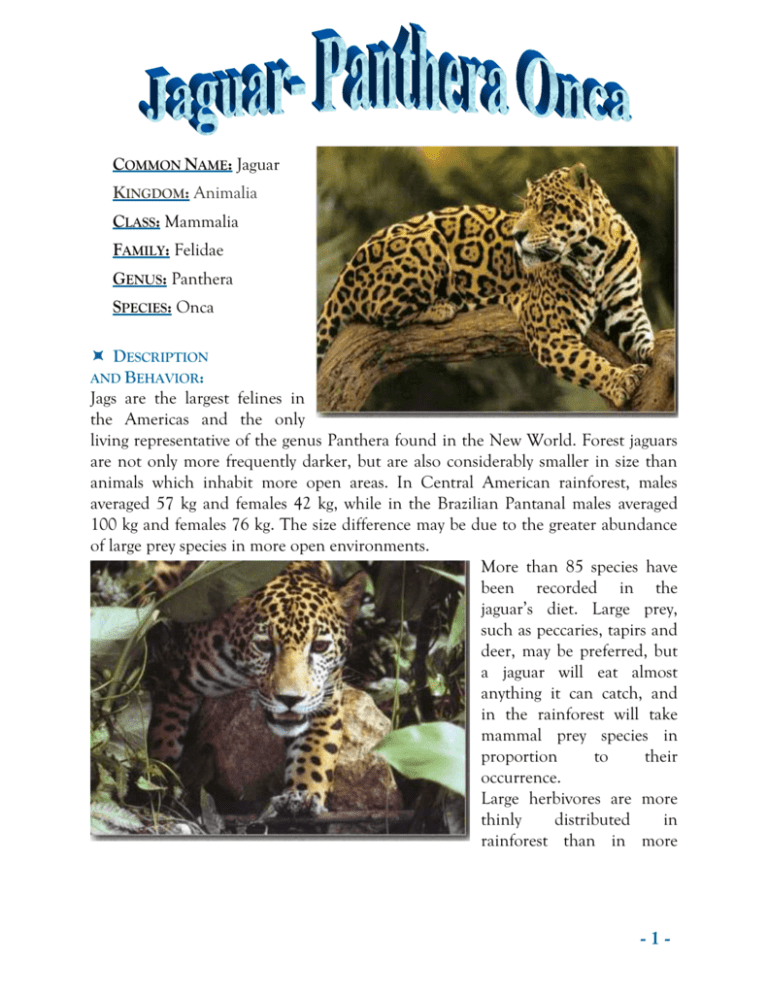
COMMON NAME: Jaguar KINGDOM: Animalia CLASS: Mammalia FAMILY: Felidae GENUS: Panthera SPECIES: Onca DESCRIPTION AND BEHAVIOR: Jags are the largest felines in the Americas and the only living representative of the genus Panthera found in the New World. Forest jaguars are not only more frequently darker, but are also considerably smaller in size than animals which inhabit more open areas. In Central American rainforest, males averaged 57 kg and females 42 kg, while in the Brazilian Pantanal males averaged 100 kg and females 76 kg. The size difference may be due to the greater abundance of large prey species in more open environments. More than 85 species have been recorded in the jaguar’s diet. Large prey, such as peccaries, tapirs and deer, may be preferred, but a jaguar will eat almost anything it can catch, and in the rainforest will take mammal prey species in proportion to their occurrence. Large herbivores are more thinly distributed in rainforest than in more -1- grassy, open habitats, where they are more likely to form groups and cluster near water, and jaguar diet in the rainforest and in savanna woodlands reflects this difference in prey availability and vulnerability. Although the jaguar has been characterized as primarily nocturnal, they are often active during the daytime, with activity peaks around dawn and dusk. Mean daily travel distance was significantly larger for a male than for females. Both sexes tended to travel further each day during the dry season. Radio-collared male jaguars tended to remain within small areas for a week at a time before shifting in a single night to other parts of their range. HABITAT AND DISTRIBUTION : The jaguar, which swims well, is strongly associated with the presence of water. Habitats meeting this requirement range from rainforest to seasonally flooded swamp areas, pampas grassland, thorn scrub woodland (Chaco), and dry deciduous forest. Although jaguars have been reported from elevations as high as 3,800 m, jaguars typically avoid montane forest, and have not been found in the high plateau of central Mexico or above 2,700 m in the Andes. The historical range of the jaguar extended from Arizona, New Mexico and Texas in the United States south to either the Río Negro or Río Santa Cruz in Argentina. Formerly occupied habitat in the north of its range included oak woodland, mesquite thickets In captivity, jags lived over 20 years, as compared to 11 - 12 in the wild. PRINCIPAL THREATS: Deforestation rates are highest in Latin America, and fragmentation of forest habitat isolates jaguar populations so that they are more vulnerable to the predations of man. People compete with jaguars for prey, and jaguars are frequently shot on sight, despite protective legislation. The most urgent conservation issue is the current intolerance of ranchers for jaguars. In many cattle-ranching operations in the region, livestock roam widely and become essentially feral. The vulnerability of the jaguar to persecution is demonstrated by its disappearance by the mid-1900s from the southwestern US and northern Mexico, areas which are today home to important puma populations. A conservation plan has been developed for jaguars in the Brazilian Pantanal, and the Brazilian government is planning to establish a National Center -2- for Research, Management and Conservation of Predators in Brazil to address livestock-predator problems. Swank and Teer (1988) emphasize the potential benefits of controlled sport hunting as an element of national jaguar conservation strategies, arguing that trophy fees would be an incentive for some ranchers to maintain jaguars on their land. Translocation of problem jaguars has also been recommended. Commercial hunting and trapping of jaguars for their pelts has declined drastically since the mid-1970s, when anti-fur campaigns gathered steam and CITES controls progressively shut down international markets. Organized poaching rings, in which fur buyers travelled through the country supplying traps and buying pelts from local people, are a thing of the past. PROJECT: PUMA IN PATAGONIA Objectives To continue the long-term study of the ecology of the puma in Chilean Patagonia. Description In cooperation with the Chilean Corporación Nacional Forestal (CONAF), Proyecto Puma has been running in Chile's Torres del Paine National Park for nearly a decade, and has gathered important data on the behavior and ecology of pumas in the southernmost part of their range. The pumas are well-habituated to humans, and park authorities are increasingly worried about potential harm to tourists. This will be one aspect of the future activities of the project. The other will be to quantify the impact of puma predation on guanacos, the major ungulate prey species of puma in the southern Andes. Time Frame: three to five years BY: ANABELLA AND JESICA -3-
